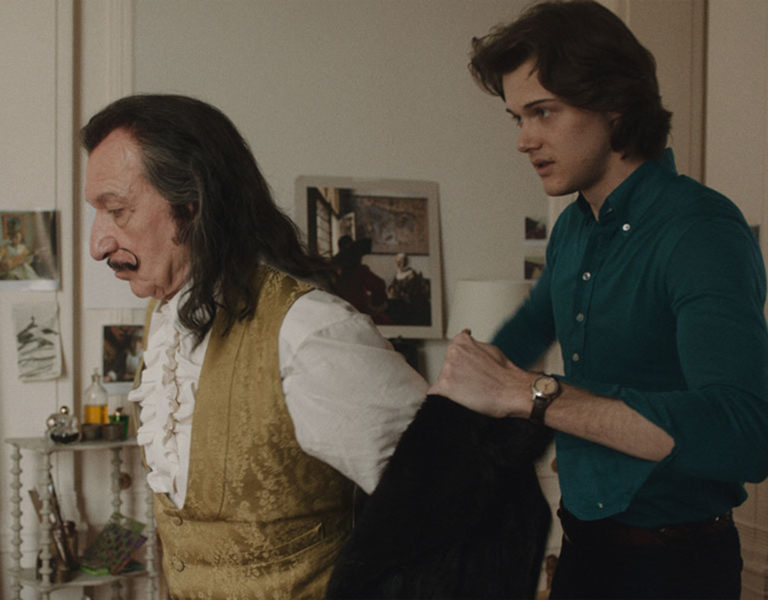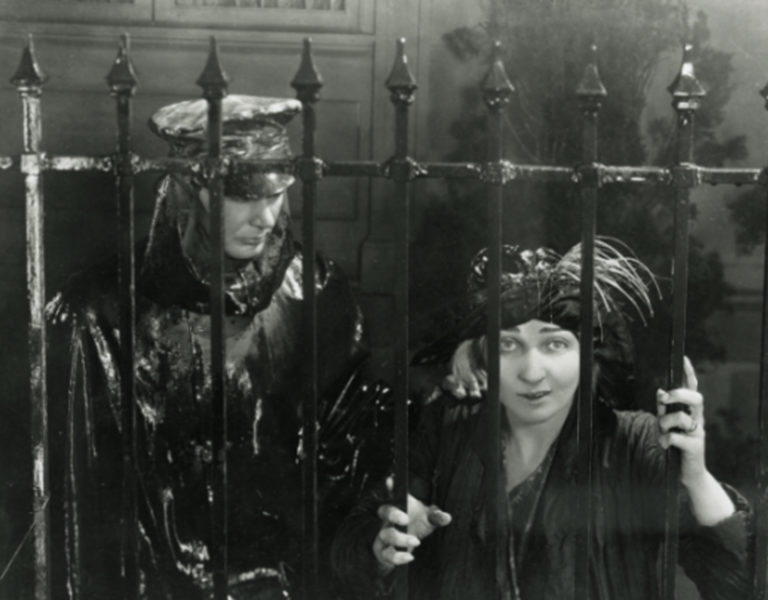NFTS cinematographer Genevieve Reyes explores how she crafted her graduate short film, including taking inspiration from the work from Old Masters and the importance of a meticulous pre-production process.
In this fictional short film, Hoora, a young girl from Iran, excels as a rhythmic gymnast in the UK. As she grows more successful, Hoora faces a difficult decision between pursuing her ambitions and conforming to her traditional culture. This film highlights the sacrifices women must make at all ages, and explores the complex relationship between mother and daughter in the face of cultural expectations.

British Cinematographer: What were your initial discussions about the visual approach for the film? What look and mood were you trying to achieve?
Genevieve Reyes: Our aim was to convey the story’s various moods and concepts using different visual elements. To achieve this, the director, Elahe Esmaili, and I experimented and played with contrast, light flares, silhouettes, and shadows. We also worked with different times of the day to match the mood of each scene.
The shadow plays a crucial role as a motif, serving as a metaphor for the character’s cultural background. Furthermore, it’s also a powerful symbol of her cultural identity, serving as a constant reminder of her roots and heritage that she cannot escape. Its presence highlights the inescapable aspect of cultural identity and the importance of acknowledging it.
To distinguish between the different worlds and emotions of the character, we used distinct colour palettes. Warm tones were used for the interior family home to represent the character’s strong cultural connection, while cooler and more neutral tones were used for the outside foreign world, conveying her sense of disconnection. We also incorporated specific colours to coincide with specific scenes, drawing on my own experience of using similar festive colours in the Philippines to create a blend of aesthetics. In Persian culture, colours have various meanings depending on the context. For example, red can represent celebration or sacrifice, green may symbolise Islam or growth, blue can signify serenity or spirituality, and yellow can symbolise glory or betrayal. During the process, I enjoyed carefully matching different colours to best fit each scene, allowing us to convey the emotions and themes through colour.
We also aimed to create a visually distinct separation between our reality and the fictional world in the film. To achieve this, some scenes have a stylised look. This intensifies even more whenever the character is determined to pursue her passion, and is reflected in the vibrant colour scheme in selected scenes.
In achieving an authentic camera approach, our goal was to create an immersive experience by placing the audience in the headspace of the characters. We had the camera on handheld and used an Easyrig for 80% of the film, allowing us to move more freely with the characters and adapt to the energy for each scene. For the dance sequences, we used a Steadicam to create a sense of flow.
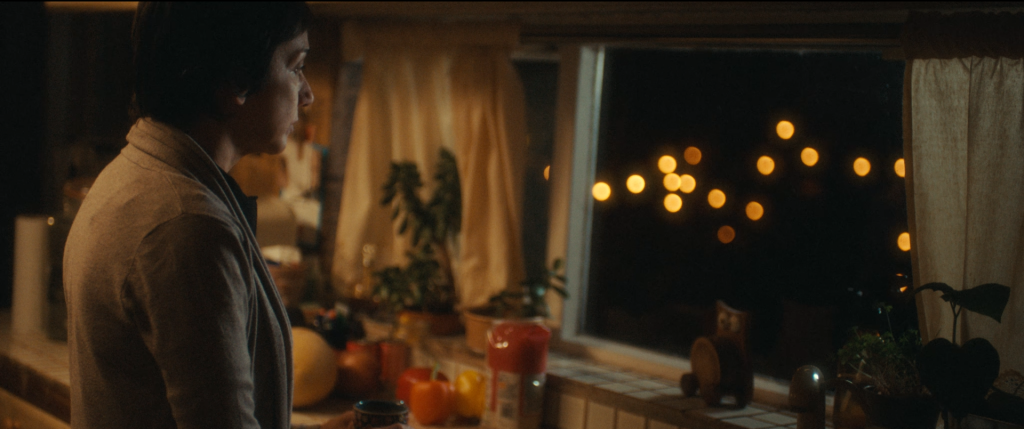
BC: What were your creative references and inspirations? Which films, still photography or paintings were you influenced by?
GR: The concept behind our film Shadow was the result of a collaborative effort between me and the director, Elahe. We gave each other the creative freedom to explore our individual ideas, which allowed us to develop a unique vision for the film.
Visual media allows me to convey complex concepts that led to the visual language of the film. To begin, I sifted through my personal collection of photographs that I had taken while wandering around London over the course of a year and a half and then I carefully selected the ones that fit the film’s aesthetic. These were images that featured a variety of subjects at different times of the day, including empty spaces, plants, friends, horses and dogs – like Fin.
Initially, I refrained from watching other films as I wanted to develop a style that was uniquely for this film, and one that would fit the story we wanted to tell. When Elahe and I discussed our ideas for the film, we shared and agreed on references that were close to our vision. Our mutual appreciation for paintings led us to draw inspiration from impressionist and baroque artists. I’ve always been fascinated by chiaroscuro, the use of strong contrasts between light and dark in European paintings. I first learned about it while I was an art studies student and later, during a museum visit with Nina Kellgren BSC. I was reminded of it and we agreed to incorporate this into the film.
We spent many hours in London’s museums, studying various paintings by Caravaggio and Rembrandt. These artists were our initial reference for lighting, and we also considered other painters such as Edgar Degas, who was known for depicting the world of ballet dancers. While his work was stylistically different from baroque artists, it served as an inspiration for the depiction of grace and movement in the film’s opening scene featuring the main character’s rhythmic gymnastics performance.
Keeping these inspirations in mind, we began researching films that captured the look and feel we were going for. One of my favourite references was Apocalypse Now, shot in the Philippines, featuring a great amount of contrast and shadow in the scene where Captain Willard kills Colonel Kurtz. This film’s cinematographer was Vittorio Storaro ASC AIC. Another film that was a reference was No Country for Old Men, which effectively utilised natural light and shadows, with Sir Roger Deakins CBE BSC ASC as the cinematographer. For the colour palette, I was drawn to Last Tango in Paris, which used colours to establish the atmosphere and emphasise emotions. The film’s cinematographer, Vittorio Storaro, used a distinct colour palette to convey a sense of passion and intimacy in the story. In our film, I utilised a more amber colour palette to convey emotional warmth, particularly in the interior scenes of the family home in Shadow.
Throughout pre-production, we remained receptive to new ideas and constantly sought ways to improve. Our primary focus was to determine what would serve the story. Then, our initial concepts evolved into guiding principles, which kept us aligned with our objective and in harmony with the film’s overarching theme. Having a clear blueprint helped us develop a moral compass for the film, guiding us in making decisions throughout the production process.
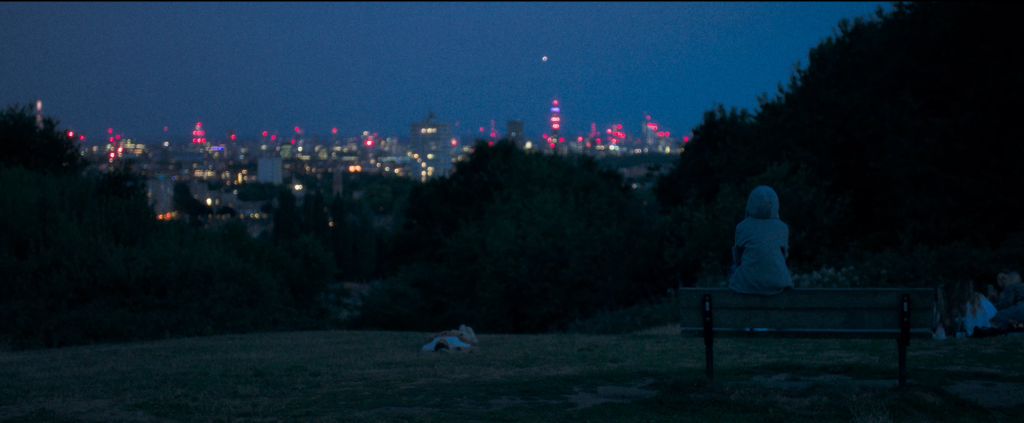
BC: What filming locations were used? Were any sets constructed? Did any of the locations present any challenges?
GR: The film was shot in various locations across London, including a gymnasium for the rhythmic gymnastics competition, a training gym, a makeshift airport, a school, Parliament Hill, Hampstead Heath, a train, and a mosque. All scenes were shot on location without constructing any sets. We meticulously planned and scheduled our shoots to ensure minimal disruption to public spaces and to make the most of the limited natural light available.
One of the most memorable experiences for our production team was the search for the perfect house and mosque, which was led by our production manager Sophie Outhwaite. Together, we scouted hundreds of houses in London until we finally found a classic two-storey ’70s house that we transformed into a stylised Iranian home for the film. The process not only helped us bond as a team but also gave us unique insight into the interiors of Muslim households. Our production designer, Luke Stronach, did a fantastic job designing the space. However, I faced some challenges while working with vintage lights and had to find alternatives and make adjustments without damaging the existing electrical wiring. I used BC pendants and other small light sources provided by Panalux to overcome these challenges. Additionally, I requested cultural elements, and with Luke’s help, we added Iranian wooden beaded curtains for texture on the walls, outdoor lanterns for depth, and special Persian lamps to enhance the ambiance of the set design.
BC: Can you explain your choice of camera and lenses? What made them suitable for this production and the look you were trying to achieve?
GR: Since we were heavily motivated by lighting, I intentionally kept the technical approach for this film simple to allow myself to focus on utilising film semiotics through lighting elements to convey the characters’ emotional states throughout the film. I used the ARRI Alexa Mini camera and ARRI Master Prime lenses. These provided an undistorted image, greater intimacy, and performed well in low-light conditions. I aimed for a natural perspective in most shots, similar to what the human eye sees in terms of field of view.
In addition, I used Tiffen filters to enhance the image with the guidance of Eren Ibrahim from the Tiffen Company. Specifically, the Gold Diffusion FX, Black Diffusion FX and the Ultra Con, which helped soften the details and counterbalanced the sharpness while maintaining the overall detail.
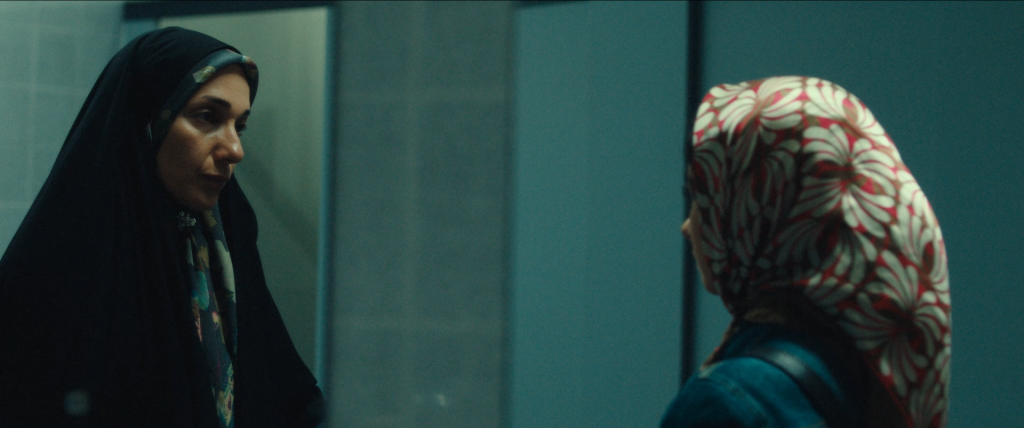
BC: What was your approach to lighting the film? Which was the most difficult scene to light?
GR: My approach to lighting the film was based on resourcefulness. We strategically scheduled day shoots and used natural light, carefully selecting locations and supplemented with Panalux lighting equipment to enhance the environment’s available light. Initially, we had planned to use large tungsten light sources to make sure we could achieve the lighting we needed, even if the weather changed. However, we had to adapt to the space and location changes, so we chose smaller and portable lights instead. My lighting team, led by gaffer Ian Blackburn and second gaffer Markela Kontaratou, provided creative ideas and alternatives whenever roadblocks arose. Our lighting setup included a range of tungsten lights, from the 2.5K HMI and Source Fours to a 1.8KW MSR Panalux and the Dedolight as our smallest source, allowing us to maintain flexibility. I always enjoyed shaping these lights with my gaffers, altering their intensity and distribution to achieve the desired effect. Then, we would control the shadows to add contrast and further shape the overall lighting, which was a key element of our process.
The interior night scenes were the most challenging to execute due to logistical limitations and time constraints, especially since we were working with child actors.
We dedicated a day for day-for-night since a majority of the scenes in the film are interior night scenes and these were shot before sunset at 9pm. The lighting team tented the two-storey house and used small light sources outside the windows to stimulate moonlight, streetlights or other outdoor light sources during daylight hours.
Adding depth to the image through practical lights is also one of my favourite things to do, a technique I learned from a mentor, Stuart Harris. I applied this technique in a night interior scene featuring the mother standing by the kitchen window in the film. Another valuable piece of advice came from another mentor, Oliver Stapleton BSC, who encouraged me to experiment with different lighting setups and try turning off one of the lights after finishing lighting. I applied this technique in my favourite night interior dance scene, and it proved to be very successful.
Lighting creatively was the most enjoyable part, but we had limited time to set up. In order to save time, we had to ensure that our evening interior scenes were lit from all possible camera angles as this allowed the camera and the actors more freedom to dance and interact with their environment. We used special lamps and other small light sources that either complemented production design or can easily be concealed within the set. Whenever we needed more exposure, my gaffer, Ian, was always prepared to attach smaller light sources in the ceiling using a polecat.
Our lighting team worked diligently to ensure that each scene was lit in a way that conveyed the desired mood and tone, while still maintaining a simple approach to our setups. I’m very grateful to our lighting team who went above and beyond with their dedication: Adam Pemberton, George Greenwood, Atikah Zainidi, Phoebe Arthurs, Marc Malilay, Myles Wilkinson-Gayle, and Berenika Golebiowska. Their contributions helped bring our vision to life and create a film that we are proud of.
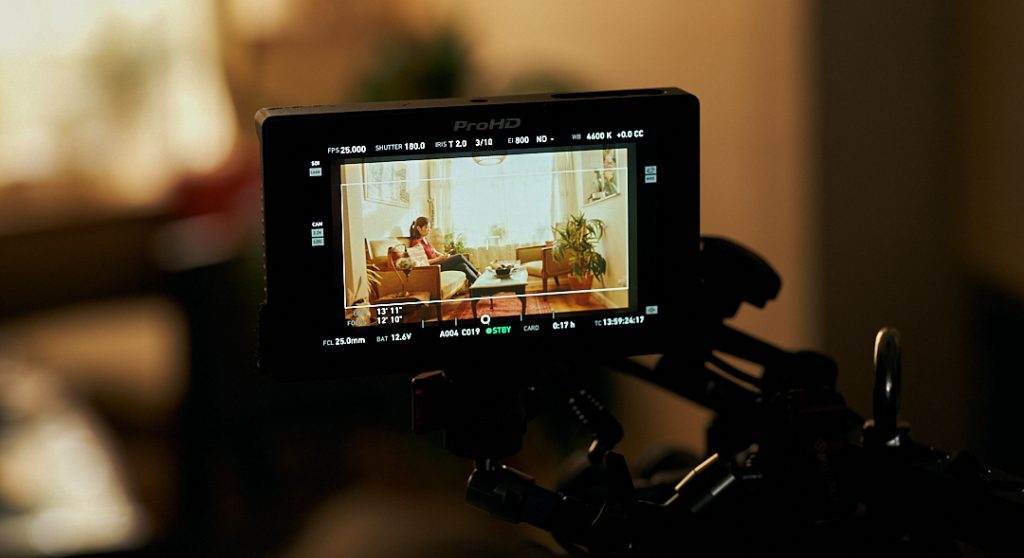
BC: What were you trying to achieve in the grade?
GR: For grading Shadow, we collaborated with our talented colourist Nathaniel Skeels to optimise the colours and fully realise the image’s potential, in line with our creative vision. We developed a low saturation LUT for the main character’s outside world and a high saturation LUT for the world of rhythmic gymnastics, creating a clear distinction between the two environments. Specific hues of red, green and blue were accentuated because it plays an important role in conveying key aspects of the narrative.
In the opening scene of the film, we intentionally heightened the dreamlike quality of the character’s rhythmic gymnastics performance to convey her state of flow and deep engagement with her passion. Nate also added halation to emphasise the costume’s intricate details and increase its shine or sparkle. Our intention was to differentiate this scene from the rest of the film, as it takes place in a different timeline and serves as a prelude to the character’s rhythmic gymnastics performance.
During the grading process, I also wanted to isolate important elements in the frame and enhance the colours of the main character’s different environments to match the film’s desired mood. Nate skilfully shaped the shadows and adjusted the colours, which helped create a more cohesive and uniform look throughout the film, while also adding more depth and atmosphere, ultimately contributing to its overall quality.
BC: What were the most challenging parts of the film to shoot and how did you overcome those obstacles?
Every film comes with its own set of challenges, but while filming Shadow, I found three situations particularly challenging.
First was during the national rhythmic gymnastics competition, where we had only half a day to set up lighting, film several gymnastic routines by young performers, and manage a large crowd and crew. Thankfully, our producer, Hayder Hoozeer, and the production team managed this complex shooting day and provided everything we needed. Director Elahe, assistant director Glenda, and I carefully planned and communicated our multiple backup plans, which included shot lists, floorplans, and storyboards to the crew to ensure we could adapt to any unexpected issues.
The second challenge was filming the Ashura event at an Iranian mosque in London with a small crew and the main cast. As this event holds great importance in the Islamic faith, we had to be respectful of the attendees and their traditions. The mosque was dimly lit, we had to acquire special Iranian lights that were shipped from Iran to match the mosque’s interiors and provide the necessary lighting for proper exposure. Throughout the nonstop three-hour filming session, I had the support of my 2nd unit AC, Gemma Mancinelli, we wore headscarves and loose clothing that fully covered our bodies to respect the dress code. As the crowd grew more dense, the temperature rose, making it suffocating for the cast and crew. The team formed a human barricade to ensure everyone’s safety. Meanwhile, two team members held me by the waist to prevent me from falling off the ledge while filming on the second floor because people were already intentionally pushing each other for space. The experience taught us the value of teamwork, resilience and adaptability on location, while being mindful of respecting the attendees and their traditions.
This is a classic story of how the team went to great lengths to capture the final shot of the last filming day. We specifically chose a long walkway with streetlights of a certain colour for our main character’s running scene. Our steadicam operator rode a rickshaw provided by Optical Support with a steadicam attached to it. To avoid being seen in shot, all essential crew members decided to sprint back and forth with the rickshaw. This included the director, camera team, lighting crew, boom operator, and other production team members. Tensions were high due to technical issues, such as the wireless follow focus throwing a tantrum at the last minute. Our 1st AC, Ash Leontyne, made the decision to bravely to pull focus on a 75mm prime lens at T1.3 while sprinting, ensuring we captured the perfect shot.
Despite being on the edge literally and figuratively multiple times, I consider us fortunate that everything turned out well in the end. Having great company made it easy to overcome these challenges. These experiences are something we still laughing about till this day.
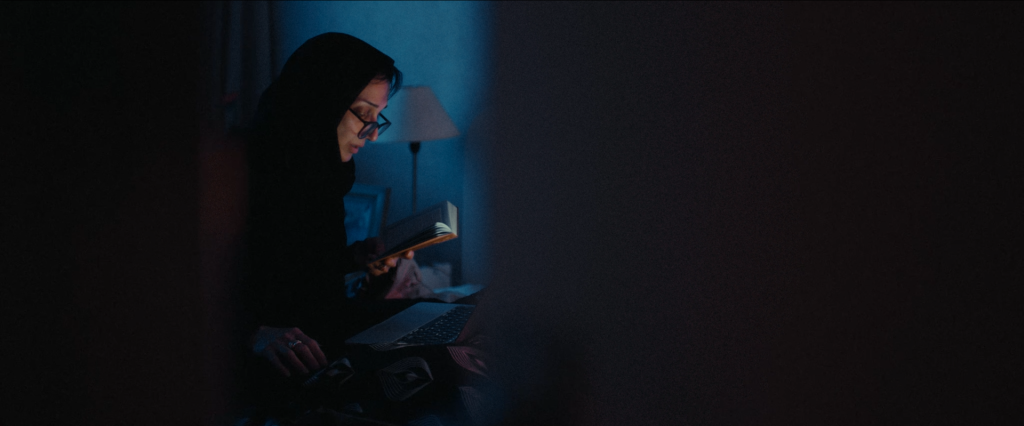
BC: What was your proudest moment from the production process? Is there a specific scene or shot that you’re especially proud of?
GR: My proudest moment would be the team executing all of our camera and lighting plans from the pre-production process in perfect sync. The confidence we had in our plans, the team’s collective skills, and our shared vision for the project helped us work assertively. There were times though when things didn’t go exactly according to plan, but at least our intention and objective for each scene guided us toward the desired outcome. To witness the development of our vision was an incredibly satisfying experience.
One of the highlights of working on Shadow was collaborating with the team on the dance sequences. Elahe and I focused on the emotion and atmosphere through music, we spent weeks listening to Persian music before shooting to understand its nuances. This helped me incorporate those elements into my lighting, resulting in a final image that captured the mood we were going for. Witnessing the dance and execution of the choreography between the performer and the camera was an enjoyable experience for us. This was perfectly executed by our Steadicam operator Ivan Wood with the assistance of our ever-dependable 2nd AC Gülistan Korkmaz.
BC: What lessons did you learn from this production that you’ll take with you onto future productions?
GR: During my training in photojournalism with the late war photographer Dennis Sabangan, I gained valuable lessons that I continue to apply in my work as a cinematographer. Specifically, his teachings on the importance of planning, mental preparedness, resourcefulness, and adaptability have proven invaluable in my present film shoots.
Through filming Shadow, I was reminded of the importance of a meticulous pre-production process and effective communication with the crew. We approached it with a mindset of shooting the film itself. Thorough planning and multiple thought-out strategies helped us effectively manage potential challenges, such as filming large crowds, navigating cultural sensitivities, and working with young actors. I also learned the value of taking calculated risks in pushing creative boundaries. As a result, I was able to confidently experiment with different ideas and techniques. My approach to shooting has been refined to prioritise planning, communicating these plans, taking calculated risks, and staying open to new possibilities.
Studying Persian culture proved to be a multifaceted and rewarding experience that provided me with valuable insights into both filmmaking and the art of observation. Throughout the filming process, I learned to rely on my other senses and pay closer attention to non-verbal cues, given that much of the dialogue in the film was in Farsi. This process allowed me to better compose and convey the atmosphere and emotions of each scene. In addition, the experience underscored the importance of being attuned to one’s surroundings and of actively seeking out new perspectives and ways of seeing.
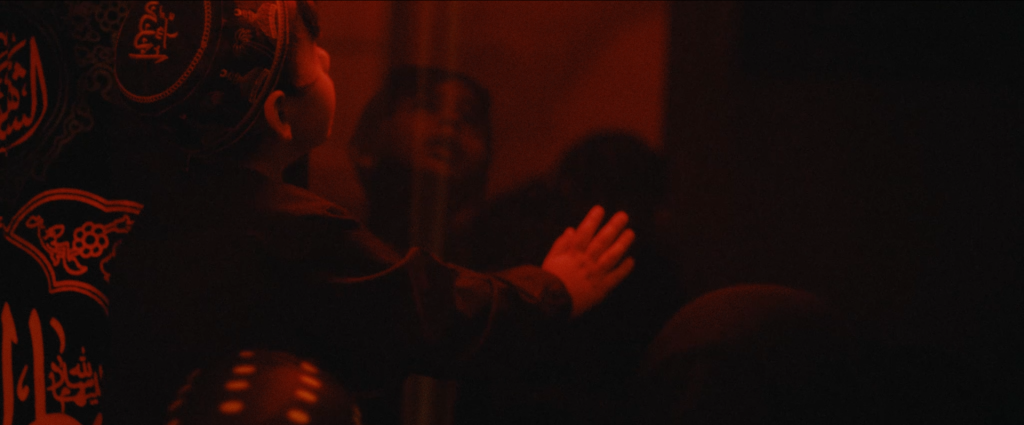
BC: What would be your dream project as a cinematographer?
GR: For me, shooting on film is always a thrilling opportunity. The level of discipline and craftsmanship when working with film inspires me to approach each shot with intentionality and artistry. I draw parallels with the discipline of photojournalism, where careful planning and composition are essential to capturing an authentic moment. The nostalgic charm of film also holds a special place in my heart, reminding me of my dad’s cinema in our provincial town. For 40 years he and my grandparents showcased classic Filipino films on vintage 35mm cinema projectors while my mom sold snacks to moviegoers.
Although I have found filming underwater on freedive to be exhilarating for many years, my ultimate goal is to be a versatile cinematographer who can create films that challenge me creatively and push the boundaries of what’s possible. Collaborating with other creatives is also a key element that excites me. I am open to exploring various genres and subjects, from socially relevant documentaries that shed light on important issues to action films, horror films, magical fantasy films, underwater wildlife films, music videos, and commercial projects.

